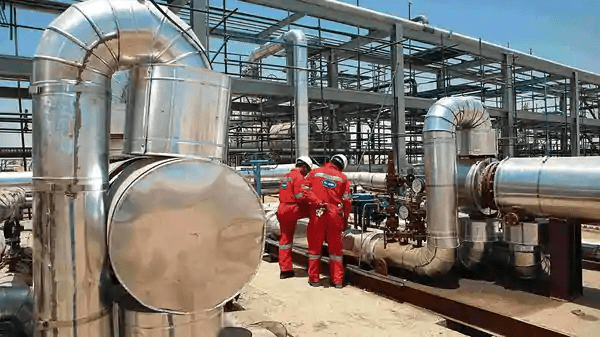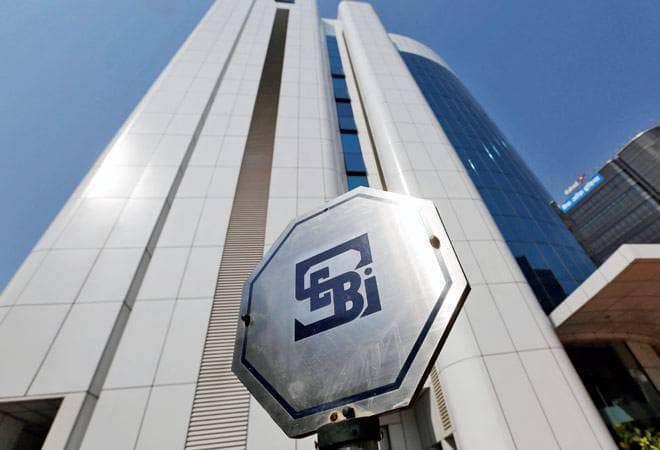
The Disappearance of Corporate Tenants In The Pandemic?
Stock market crashes, mass unemployment, and disruptions hinting at a recession – are only the tip of the iceberg and its underlying repercussions are likely to unfold with time. The COVID-19 pandemic is adversely affecting commercial real estate (CRE) as it continues to wreak havoc in industries throughout the economy. For many years, the primary declining CRE sector in India has been a brick and mortar retail stores.
However, the retail sector is no longer suffering alone, as the COVID-19 outbreak is hurting most other CRE sectors: office, hospitality, multi-family, restaurant, personal services, entertainment, and construction.
Central, state, and local governments have ordered business shutdowns and social and travel restrictions limiting most social and commercial activities. As a result, commercial tenants throughout the country are going out of business, temporarily closing, curtailing operations, laying-off employees, and suffering sharply declining revenues.
Even so-called “essential” or “life-sustaining” companies that are largely exempt from governmental restrictions are experiencing declines in business. The spread of this deadly virus can prove to be the biggest black swan event for the real estate sector. Where all commercial real estate may see a decline, retail businesses may find that their regular flow of customers substantially reduced thereby essentially placing a period on the rental incomes of commercial landlords.
-
‘Force Majeure’ provision
In the absence of any clarity by the Government on rental obligations under commercial lease agreements, businesses are left struggling with zero sales coupled with salary and rental obligations. Amid the pandemic, the much forgotten ‘Force Majeure’ provision in contracts and leases has gained traction and attention. The commercial tenants could invoke the ‘force majeure’ to absolve them from rental payments during “an event beyond the parties’ control”.
However, force majeure events are not exhaustively laid out under the law, and the applicability of this provision depends on the language of the rental agreement and the interpretation of the courts. Therefore, the parties must renegotiate the terms of the agreement to provide breathing room for both parties.
-
Doctrine of Frustration
A question that may arise is whether a Lessee can invoke the Doctrine of Frustration in the absence of a Force Majeure Clause for Non-Payment of Lease Rent? Typically, the Doctrine is invoked in circumstances where the purpose of their contract is held to be frustrated under Section 56 of the Indian Contract Act.
However, the Supreme Court in Raja Dhruv Dev Chand v Raja Harmohinder Singh, observed ‘’Authorities in the courts in India have generally taken the view that Section 56 of the Contract Act is not applicable when the rights and obligations of the parties arise under a transfer of property under a lease’’.
Thus, it is unlikely that a lessee can claim frustration of contract in the absence of a Force Majeure clause under a lease agreement and seek a waiver of lease rental as a consequence of a Force Majeure event. However, most tenancy agreements don’t have the provision of ‘force mature and cannot invoke the doctrine of frustration and so unless announcements are backed by ordinances, the uncertainty of its enforceability remains.
-
Common Area Maintenance Costs
Commercial landlords responsible for common parts (Common Area Maintenance) are providing more frequent and thorough cleansing of those common parts, particularly frequently touched surfaces (e.g. door handles, elevator buttons, and toilets), although, there is no legal obligation on them to provide such services to prevent the spread of the virus.
Supplying these extra cleaning services will have cost implications, and commercial landlords should check the service-charge provisions in their leases to ensure such charges are recoverable.
Wider regulatory issues regarding any steps taken (such as cleaning or surface disinfection) by a commercial landlord or its managing agents should also be addressed.
For example, municipal permission for commercial premises will often contain conditions that restrict or limit the hours within which such operations may take place. This could possibly catch enhanced or additional cleaning activities, for example, if additional garbage clearance is required or additional traffic and noise are caused.
But there could be a possible solution in order to save the commercial leases and the solution can lie in one of the most important statutes.
-
Transfer of Property Act
Section 105 of the Transfer of Property Act (TPA) defines a “lease”. The recognizes certain situations under which unforeseen circumstances may give rise to a justified ground to treat the lease as terminated. Section 108(B)(e) shows three criteria must be satisfied before any benefit can be derived:
(i) the existence of an ‘irresistible force’;
(ii) property becomes substantially and permanently unfit for the use for which it was let; and
(iii) the lessor must be informed of the lessee’s decision to render the lease deed void. Therefore, under Section 108(B)(e), it is as important to establish that COVID-19 rendered the property permanently unfit for the purpose for which it was leased out, as it is to establish that COVID-19 is in itself an instance of an ‘irresistible force’.
In this context, it becomes important to examine whether COVID-19 and the lockdown can be termed as an ‘irresistible force’ for the purposes of Section 108(B)(e). Black’s Law Dictionary defines force majeure, inter alia, as a “superior or irresistible force” (4th ed. 1972).
While the authors have not come across a judicial precedent where the definition of ‘irresistible force’ has been specifically settled, obiter indicates that the Courts have not made a distinction between ‘irresistible force’ and force majeure. Whether COVID-19 itself would qualify as a force majeure event is a question of fact and is most likely to be settled on a case-to-case basis.
-
Payment obligations and unforeseen circumstances
An obvious and major concern is whether the payment obligations under the lease remain active despite the lessee not having access to the property. The question as to COVID-19 and not having access to the property is a question of fact for the courts to determine on a case-to-case basis. But Courts have deemed that the lessee is in possession of the property and has access to it unless a notice under Section 108(B)(e) of the TPA is sent to the lessor.
-
Considerations for a Lessee
The relationship between the lessee and the lessor is primarily governed by the terms of the lease deed. If the lease deed does not have a force majeure clause, the resort has to be had to Section 108(B)(e) of the TPA. The lessee will have to first satisfy himself that the event is one of ‘irresistible force’ and has to notify the lessor to avoid future rental payments.
This analysis is complicated by two important considerations. First, a lessee can only seek the benefit of Section 108(B)(e) if the lease in question is duly registered under the Registration Act, 1908. In the absence of registration, a lessee must examine their protection under common law for a month-to-month tenancy. Second, most lease agreements for commercial establishments contain an arbitration clause as the means for dispute resolution.
The arbitrability of disputes under a lease deed is currently pending resolution by the Supreme Court. In Himangni Enterprises v. Kamaljeet Singh Ahluwalia (2017) the Court held that disputes under the TPA were non-arbitrable.
The correctness of this view has been doubted in Vidya Drolia vs Durga Trading Corporation(2019) and a reference to the three-judge bench is currently pending. Given a large number of open-ended questions, it would be interesting to observe how courts react to the impact COVID-19 has had on various economic relationships.
Impact on the Sector
The Indian residential sector has been grappling with subdued demand for the past few years. In an attempt to stay afloat amidst changing dynamics, developers tried to pull all levers like restricting supply, focussing on execution, reducing unit sizes, and developing affordable housing projects.
However, the liquidity crisis initiated by the IL&FS fiasco and subsequent fallouts of various financial institutions further impacted the residential sector. Amidst these changing dynamics, PE players shifted their attention totally towards commercial assets.
As per ANAROCK Research, residential PE investments’ share of the overall inflows declined from 53% in 2015 to a mere 8% in 2019. COVID-19 has severely hit the residential real estate business and the sector has come to a standstill.
With a screeching halt to site visits, discussions, documentation, and closures, the early indicators depict that we are likely to face a tough time for the next few quarters and the sector’s recovery has been pushed further away by at least a couple of years. As per ANAROCK research, more than 15.62 Lakh units launched between 2013 till 2019 across the top 7 cities of India are in various stages of construction.
Of this, MMR and NCR together comprise 57% or about 8.9 Lakh units. With India being locked down until mid-April 2020 (as per the current advisory) there will be massive disruptions in the construction material supply even after the lockdown ends, leading to disturbances and delays in the construction activity.
Conclusion
The customary strained landlord-tenant relationships are further distressed with the lack of clarity in central and state government announcements bringing fore questions of eligibility and applicability of relief measures. Until the air clears (pun intended), Indians will continue to rely on legislation that hugely favors tenants in rental disputes, leaving landlords grappling to survive the crisis without any respite.
In the interim, as parties await clarification from the government, it is advisable to facilitate a shared objective of contractual performance through collaboration and provide a win-win solution to all until normalcy returns.
Tags: commercial realestate, commercial land, renting to corporate tenants, pandemic recession, Corporate Tenants, mass unemployment, commercial real estate

Landlord Legal Aspects – Tenant Disputes in Commercial Realty
Increasing unemployment levels, stock market crashes, and supply chain disruptions are only some of the effects of the COVID-19 outbreak. Many more underlying repercussions shall unfold over time.
With most Indian businesses adversely affected owing to the nationwide lockdown implemented by the Central Government to curb the spread of the virus, the Commercial Real Estate Sector (CRE) has been hit hard. Almost all of the CRE segments, namely: hospitality, office, restaurant, entertainment, and construction, have been impacted.
The Centre and the State governments have been ordering businesses to close commercial establishments such as offices and shops and advising the same to work from home (if possible), barring those in essential services. The result has been that a significant number of commercial tenants have been curbing operations, cutting jobs amid sharply declining revenues.
Even the so-called essential businesses have been experiencing a decline in their income. Where commercial real estate may see a drop, retail companies may find that their regular flow of customers has reduced substantially, thereby placing a period on the rental incomes of commercial landlords.
Force Majeure
Since the Central Government has not provided any clarity over rental obligations under commercial lease agreements, such establishments have been left struggling with negligible sales numbers, in addition to rental and salary obligations.
Amidst this outbreak, the much-forgotten ‘Force Majeure’ provision in leases and contracts has gained attention and traction. The commercial tenants could invoke the said provision to get relief from needing to clear rental payments during an event that is beyond the control of parties (as per Force majeure).
Nevertheless, Force Majeure events are not laid out exhaustively under the law, and the applicability of this clause depends mainly on the language of the rental agreement and interpretation by the courts. Hence, both parties have to re-negotiate agreement terms so as to get some relief during this time.
Doctrine of Frustration
An important question that could arise is whether a lessee can invoke the Doctrine of Frustration in the absence of the Force Majeure provision for non-payment of lease rent. Usually, the same is invoked during circumstances where the purpose of the concerned contract is held as frustrated under Section 56 of the Indian Contract Act.
Having said that, the Supreme Court (SC) in the Raja Dhruv Dev Chand vs Raja Harmohinder Singh, observed, “Authorities in Indian courts, have generally taken the view that Section 56 of the Contract Act is not applicable when the rights and obligations of the parties arise under a transfer of property under a lease.’’
Therefore, it is improbable that a lessee can claim frustration of contract in the absence of a Force Majeure provision under a lease agreement, and seek a waiver of the rental as a result of a Force Majeure event.
Nonetheless, the majority of tenancy agreements do not contain the Force Majeure clause, and cannot invoke the doctrine of frustration. Thus, unless ordinances appropriately back announcements, the uncertainty of its enforceability continues.
Maintenance Cost of Common Areas
Commercial landlords responsible for common parts (Common Area Maintenance) are providing more frequent and thorough cleansing of those common parts, particularly the frequently touched surfaces (e.g. door handles, elevator buttons, and toilets). However, there is no legal obligation on them to provide such services to prevent the spread of the virus.
Supplying these extra cleaning services will have cost implications, and commercial landlords should check the service-charge provisions in their leases to ensure such charges are recoverable. Broader regulatory issues regarding any steps taken (such as cleaning or surface disinfection) by a commercial landlord or its managing agents should also be addressed.
For example, municipal permission for commercial premises will often contain conditions that restrict or limit the hours within which such operations may take place. This could catch enhanced or additional cleaning activities, for example, if additional garbage clearance is required or additional traffic and noise is caused.
There could be a possible solution to save commercial leases. The same can lie in one of the most important statutes.
Transfer of Property Act
Section 105 of the Transfer of Property Act (TPA) defines a “lease”. This recognizes certain situations under which unforeseen circumstances may give rise to a justified ground to treat the lease as terminated. Section 108(B)(e) shows that three criteria must be satisfied before any benefit can be derived:
(I) the existence of an ‘irresistible force’;
(II) the property becomes substantially and permanently unfit for the use for which it was let; and
(III) the lessor must be informed of the lessee’s decision to render the lease deed void.
Hence, under the same Section, it is as equally essential to establish that the novel Coronavirus rendered the property permanently unfit for the purpose, for which the property was leased out, as it is to determine that the novel Coronavirus is in itself, an occurrence of ‘irresistible force’.
In this context, it becomes crucial to examine whether the said virus and the nationwide lockdown can be termed as an ‘irresistible force’ for Section 108(B)(e). Black’s Law Dictionary has defined Force Majeure, among other things, as an “irresistible or superior force” (4th ed. 1972).
While the dictionary’s authors have not encountered a judicial precedent, where the definition of ‘irresistible force’ has been specifically settled, obiter stipulates that the Courts have not made distinctions between Force Majeure and ‘irresistible force’. Whether the novel Coronavirus itself would qualify as an event under Force Majeure is a question of fact, and is most probably to get settled, on a case-to-case basis.
Payment obligations and unforeseen circumstances
An evident and significant concern is whether the payment obligations under the lease remain active despite the lessee not having access to the property. The question as to the presence of COVID-19 and not having access to the property is a question of fact for the courts to determine on a case-to-case basis. However, the Courts have deemed that the lessee is in possession of the property and has access to the same unless a notice under Section 108(B)(e) of the TPA is sent to the lessor.
Considerations for a Lessee
The relationship between the lessee and the lessor is governed primarily by the terms of the lease deed. In case, the lease deed does not contain a Force Majeure provision; the resort has to be had to the Section mentioned above, of the TPA. First, the lessee has to satisfy himself that the event is one of ‘irresistible force’, and also has to communicate the same to the lessor, to avoid making rental payments, in the future.
This analysis is made complicated, owing to two essential considerations. First, a lessee can only seek the benefit of Section 108(B)(e) if the lease in question is duly registered under the Registration Act, 1908. In the absence of registration, a lessee must examine their protection under common law for a month-to-month tenancy.
Second, the majority of commercial lease agreements include an arbitration clause, as the means for the resolution of a dispute. The arbitrability of disputes under a lease deed is, in the current scenario, awaiting a decision by the Supreme Court.
In Himangni Enterprises vs Kamaljeet Singh Ahluwalia (2017), the Court held that the disputes were non-arbitrable under TPA. Although, a doubt has been cast upon the accuracy of this view in Vidya Drolia vs Durga Trading Corporation (2019), and a reference to the three-judge bench is still pending.
Therefore, given the vast amount of open-ended questions, it would be interesting to witness how courts would react to the impact that the novel Coronavirus has had on a variety of economic relationships.
The Indian residential sector has been grappling with subdued demand for the past few years. In an attempt to stay afloat amidst changing dynamics, developers tried to pull all levers such as restricting supply, focusing on execution of existing supply, reducing unit sizes, and developing affordable housing projects.
However, the liquidity crisis initiated by the Infrastructure Leasing and Financial Services (IL and FS) fiasco, and the resultant fallouts of multiple financial institutions further impacted the housing sector. In complete view of these changes, Private Equity (PE) players had shifted their focus primarily toward commercial projects.
As per an industry research report, the share of PE investments made in the residential sector declined from 53 percent in 2015 to a negligible 8 percent by 2019. COVID-19 has severely hurt the residential real estate business, and the sector has come to a standstill. With site visits coming to a grinding halt, the evaluations, paperwork, and deal closures have also been reduced.
The early indicators show that we shall probably face a difficult time during the upcoming few quarters, and the sector’s recovery has been pushed further away, by at least a couple of years.
The tenant-landlord relationship, which is customarily strained, has become distressed further due to the lack of clarity in the announcements of relief measures made by the Central and State governments.
Until the same is made clear, Indians will keep depending on legislations that heavily favor tenants over landlords, during a rental dispute. Thus, landlords would be kept grappling to survive through the current crisis.
During the interim, as both sides wait for a clarification from the government, it would be prudent to facilitate the shared objective of contractual performance, via collaboration and the provision of a win-win solution to the same, till the return of normalcy.
Tags: supply chain disruptions, commercial real estate sector, tenant disputes, supply disruption, landlord tenant dispute, landlord and tenant disputes, landlord dispute, commercial tenant disputes

COVID-19 Impact on The Landlord Tenant Relationship
Sequoia Capital, a leading venture capital company, termed the novel Coronavirus the ‘Black Swan of 2020’. Black swans are rare, and so is this virus. The pandemic has been spreading at an alarming rate, pushing economies to an unprecedented standstill, and placing a period on the rental incomes of landlords.
In the wake of mass unemployment, salary cuts, and loss in investment values, the Central and State governments were compelled to provide rent relief measures to tenants, especially for the lower strata of the society.
Thus, to prevent a wave of homelessness, the Central Government introduced several rent relief measures. In a recent order, the same discouraged landlords from demanding rent from poor people and migrant workers. The Uttar Pradesh government also issued an order in the Noida area with regards to asking landlords to defer the collection of rent by a month.
The order also included a punitive action in the form of imprisonment of up to one year, a hefty fine, or even both of the aforementioned, for landlords found to be violating the said order.
Recently, the Maharashtra Housing Department also advised landlords and homeowners to postpone rental collections from tenants for at least three months, and not evict tenants for non-payment of the same. This circular, however, is only an advisory to landlords in Maharashtra, and should not be misconstrued as absolute or legally enforceable. The rationale was to grant relief to tenants who are not able to fulfill their rental obligations during the current crisis.
This decision was welcomed by tenants located across the state. One prominent real estate developer announced a full waiver for its retail tenants in its properties until the end of the lockdown. However, not all landlords have taken similar actions to mitigate the suffering of small businesses.
In fact, relaxations meant to secure a roof over tenants may jeopardize those landlords whose survival is largely dependent on rental incomes, especially in the case of some senior citizens. To the lack of respite by the government, landlords continue to bear electricity and water charges, property taxes, insurance, maintenance, and mortgage payments.
To provide fiscal stimulus and liquidity, RBI announced a three-month moratorium on Equated Monthly Installments (EMI) of loans, such as housing loans, personal loans, auto loans, working capital loans, and even credit card dues, to name a few, without negatively impacting the credit scores of borrowers. This move is likely to abate the potential ripple effect across the real estate and banking sectors caused by massive loan defaults.
However, there is a caveat that interest is not waived off, and will continue to accrue on the outstanding loan amount. Furthermore, such forbearance programs only defer mortgage payments, rather than completely forfeiting or discounting the cost.
Maharashtra Housing Department’s un-enforceable circular coupled with the EMI moratorium imposed by the Reserve Bank of India (RBI) may leave startups and small businesses with low cash reserves, struggling to survive the ongoing crisis. Unfortunately, lessees (commercial) might not be able to benefit directly from these orders, since many banks have this prerogative of creating relief packages, and evaluating applications to avail for the same.
The government’s move fails to provide all-encompassing blanket protection, especially to corporates in need. As a result, many businesses may not be able to see the light at the end of the crisis.
Additional remedies available to landlords and tenants shall depend on the language of the contract and the legal relationship between the parties – be it lessor-lessee, licensor-licensee, or landlord-tenant. The commercial tenants could invoke the clause of Force Majeure, which could be used to absolve them from clearing rental dues in the midst of an event beyond their control, which affects their ability to operate.
Nevertheless, events under the said clause are not stated exhaustively under the law, and the applicability of the same depends upon the language of the contract and its interpretation by the Courts. Therefore, the parties must review and, as mutually agreeable, revise the terms of the agreement in order to meet a consensus and provide breathing room to both parties.
Regardless of government efforts, individual circumstances indicate foreclosures across the country. Fortunately, the Supreme Court observed, “A tenant can not be evicted arbitrarily via the use of the provisions of the Securitisation and Reconstruction of Financial Assets and Enforcement of Security Interest Act, 2002, (SARFAESI Act) since that would amount to usurping the statutory rights of protection provided to the said tenant.”
Therefore, in case of a landlord fails to repay a loan, the same can not use section-35 of the SARFAESI Act to bulldoze the statutory rights provided to the tenant under the Maharashtra Rent Control Act, 1999.
Therefore, in a crisis, where resources and revenues drain faster than expenses, only time will tell whether the government’s measures for protecting the interests of the tenants will leave landlords grappling to survive the crisis without any respite.
In a jurisdiction that hugely favors tenants in rental disputes, landlords, though perceived as wealthy and greedy, may bear the brunt in the wake of rent relief measures announced by the Central and State governments.
Though normalcy appears to be a distant dream in India, deep collaboration between parties to a contract with a shared objective of contractual performance, may keep litigation off the charts and provide a win-win solution to all.
Tags: landlord and tenant, private landlords renting, landlord tenant relationship, notice to vacate, landlord tenant lawyer, tenancy act,
landlord tenant

The Rising Prominence of Force Majeure Under RERA
The slowbalisation of world economies due to the COVID-19 outbreak has frozen funds, immobilized citizens, and put a halt to the growth of several industries. The real estate sector has not been spared, owing to lack of labor availability due to vast numbers of the same migrating back to their hometowns, and declining asset prices, thus decreasing the purchasing power of customers.
The resilience of this sector shall be put through a test as projects, most of which might get delayed with construction activities stopping during the lockdown period. In such a scenario, when developers and other real estate players are desperately reviewing their contracts to invoke a provision that absolves them legally from non-performance of their obligations under the same contract, the provision of Force Majeure gains prominence.
Under the Real Estate (Regulation and Development) Act, 2016 (RERA Act), section-6 describes the force majeure condition and explains that the registration is given by the concerned Real Estate Regulatory Authority (RERA), could be extended, in case a promoter applies for the same purpose, albeit backed by a Force Majeure event.
Force majeure, under RERA Act, means an instance of a flood, war, fire, cyclone, drought, earthquake, or any other nature-caused calamity, which affected the regular operation of a real estate project. The point to be noted is the ‘any other nature-caused calamity’.
In the cases, where an agreement includes the clause of Force Majeure, the promoter has to make clear the scope of the same clause, to ascertain, if the term pandemic/epidemic or something alike, is included therein. After the promoter triggers the clause of Force Majeure, if included in the agreement with an allottee, the current crisis would not frustrate the entire contract or absolve the promoter of delivering the promised units.
Still, it will only grant the promoter some extra time to fulfill the agreement. Therefore, the duration of such an extension would depend upon the impact of the novel Coronavirus on the real estate project.
Once a promoter achieves the milestones of construction which are linked with payments, an allottee shall not be asked to pay any more installments. For the milestones which have been completed, it is not likely that an allottee would be granted an exemption by the promoter.
Whereas, if such an agreement does not include the Force Majeure provision and there arises a failure to deliver possession by the promoter, the respective allottee has the right to withdraw from the real estate project, under section-18 of the RERA Act.
In cases like these, the promoter has to return the capital received by him/her with respect to the concerned property in addition to interest and suitable compensation. On the other hand, if the allottee does not intend to withdraw from the real estate project, then the promoter has to pay interest to the allottee for each month that the respective property gets delivered to the said allottee.
In such instances, where a contract does not include provisions dealing with the results of certain supervening events, the doctrine of frustration, as given in section-56 of the Indian Contract Act, 1872, could be applied. The same section, among other things, provides that a contract to do an act if after the contract is already made, becomes impossible to do, due to an event over which the promisor had no control and could not prevent the same, the contract becomes void.
Nevertheless, in the present circumstances, parties might not be keen to go down this path, as the route of frustration ultimately leads to the termination of the contract in its entirety, and the promoter may instead be wanting temporary relief, from the performance of their obligations under the concerned contract.
Usually, the invocation of section-6 of the RERA Act is not automatic, and promoters have to submit an application for the same purpose to the concerned Real Estate Regulatory Authority. However, the Ministry of Finance, Government of India, has taken cognizance of the novel Coronavirus as an event of Force Majeure, thus providing much-needed relief to real estate companies in India.
The ministry also gave an extension to the validity of the registration and the completion date, suo-moto, by six months, for all real estate projects registered under RERA Act, which were expiring on March 25, 2020.
Even if this announcement may not wholly save the real estate sector from the financial distress it currently finds itself in, the said sector will be able to gather up some resources for the much bigger battles that wait going forward, since the purchasing power of homebuyers is hit severely by the viral outbreak, and purchasing a home has dropped to a lower point on their list of priorities.
Given the ongoing crisis, which none of the contracting parties could have predicted, the Central Government considering COVID-19 as a Force Majeure event, is a step in the right direction.
Along similar lines, the Singapore Government had, on April 7, 2020, cleared the COVID-19 (Temporary Measures) Act 2020, to provide measures of a temporary nature, as well as to deal with any other matters with regards to the COVID-19 outbreak.
This Act, coming into force on April 8, 2020, provides for among other things temporary relief in case of the inability to perform a contract, in addition to extra relief, if unable to complete a supply or a construction contract.
Tags: majeure, force majeure under rera, majeure meaning, define force majeure, force de majeure, force majeure, real estate sector

Future of MSMEs in India Post Pandemic
The Small and Medium Enterprises (“MSMEs” hereafter) sector plays a central role in the global economy. MSME creates a lot of jobs, drives innovation and acts as an incubator for tomorrow’s multinational corporations.
MSMEs that contribute to almost 45 per cent of India’s gross domestic product (GDP) are suffering because of both supply and demand issues and are quickly losing their small reserves and cannot expect to survive this crisis unless substantive support is immediately available.
The sector has added some significant power to the overall business, contributing a whopping 40 per cent to the country’s GDP through its 200,000 kroner goods and services. It is also the engine of life for millions of people.
India has registered an 11-year low economic growth of 4.2 per cent in FY20, and many sources forecast a negative growth rate for FY21 as we stare at a recession after almost four decades. Across various horizons, many sectors will experience a contraction in demand and job opportunities, and be contingent upon the performance of multiple factors.
MSMEs have no easy path to prosperity. The problems that harangue the industry and reduce margins range across infrastructural deficiency including lack of adequate capital, infrastructural hurdles, inadequate digitalisation, scattered markets, absence of compatible financial partners and final and the biggest behemoth of statutory clearances dealing with the ‘Babus’, the political stooges, gangs and goons, cartels etc.
Alongside all the pre-existing problems, MSMEs were already in a weaker phase owing to the policies like demonetisation and the haphazard implementation of GST, which cornered this sector in a vulnerable position.
Accumulated distress over various policies undertaken was enough to bog down the growth rate for this highly potent sector when COVID-19 came as a watershed moment and has grounded this sector’s independence to sever dependence upon the government’s ability to prevent the death knell of bankruptcy. However, even if MSMEs go bankrupt in the current period, its oblivion for them as IBC de-facto stands suspended.
There is a certainty about contraction and estimates range from 30-35 per cent of MSME operations are deploying on standby or even shutting down. In such a precarious situation, it is of utmost importance to determine the future path for the MSMEs, and its prediction has to be determined by factoring the history and the developing scenario.
Despite contributing to over 40 per cent of the economy, the percentage of lending to this sector is comparatively low at only 16 per cent. This in itself is an entity large enough to determine the rebound of economic growth and will only spring back into action, once the demand normalises.
MSMEs in India produce around 6,000 types of products; lockdown and the subsequent fear in the populace, lower liquidity and job cuts will alter the demand for products other than those necessary for living consumption of products. Even if the best is assumed and the vaccine comes within the next six months, it is yet to imply the participation of the workers would institute a pre-COVID level of productivity.
There are primers and hints as to the oncoming situation with the gloomy news. The revival of demand in rural areas, various moves by the States to deregulate labour laws and efforts to woo investment under the new reforms of equity are to help the MSMEs.
It would be more on the lines of re-location of production and demand capacities rather than a fresh generation but would act as a shock-absorbing pad for the poorer States as richer ones would be able to withstand the shock much more easily.
MSMEs located near a city will take a higher time to recover; the sudden paucity of the workforce will pinch the labour and skill availability of the states. However, the generation of local labour capacity could fulfil labour demand and might as well boost the local economy.
There could be an increase in MSMEs coming under the risk of becoming NPA’s during the next 12 months. The way out for the MSMEs revival in the short term is rapid liquidity injection, collateral-free loans, low-interest rate subordinated debts and revised definitions, and bringing wider firms under the government benefits bracket.
The government has appropriately responded to realising the current crisis with programs like ‘Equity Support to the MSMEs’. However, the suspension of the IBC might be a downer. An emergency fund for distressed firms to support the MSMEs in times of significant stress has been established, and direct action should be increased by increasing the corpus within this fund.
Several negatives are countered by the fact that the threshold for migration of businesses from China has reduced, and the democratic setup of the country has ensured better confidence with investors and peers across the world. It has provided the onus entirely upon the government to rein in the economic engines and work onward reducing the complications of running a business.
The contraptions of inadequate and outdated infrastructure and complex and weird tendencies of government officials act as an impediment to the delimitation of the economic forces and commercial creativity.
In conclusion, the short term losses might be immense, wiping out a chunk of the MSMEs from the ecosystem. However, the incentives of withstanding these exceptionally insane times may provide rewards of equivalent nature.
Tags: global economy, gross domestic product, future of msmes in india, economic globalization, gdp full form, msme future in india, small and medium enterprises

How to Deal with Commercial Disputes and Construction Disputes
Commercial disputes will be inevitable in the post-COVID-19 world. Sonam Chandwani, Managing Partner at KS Legal & Associates and head of its Corporate Litigation Practice, specialises in commercial structures, litigation and mergers & acquisitions. She details the best way to resolve any commercial disputes in the ‘new normal’:
One of the unintended consequences of the stringent COVID-19 lockdown could be a jump in the number of commercial disputes, especially in the construction and real estate sectors. The lockdown led to an unexpected disruption in commercial activities threatening firms’ abilities to fulfill their contractual obligations.
The primary dispute could arise in terms of fulfilling contractual obligations. Each party has its pre-decided terms of the contract. There is a probability of a party being in breach of the contract if they fail to perform the conditions, warranties and other terms promised to perform.
The companies could suffer from delays when a product or a project is not delivered within the time frame of the contract. Lastly, there could be complete non-performance of the contractual obligations due to the Coronavirus crisis.
Commercial disputes can be messy and financially expensive for the parties involved.
This makes it important for companies and their management to get a firm grip on the various nuances of contract enforcement and the dispute resolution mechanism.
The first step would be to understand the laws governing contracts in India. It will determine the course of law available as a remedy. Many of the disputes are likely to be around the invocation of ‘force Majeure which literally refers to unforeseeable circumstances that prevent someone from fulfilling a contract. The Indian Contract Act, 1872 provides for a statutory provision of Force Majeure.
The government also has memorandums that declared force majeure and issued directions to agencies and departments. Force majeure could be a feasible option for a distressed party failing to comply with the terms of the contract leading to a dispute between the parties.
Another important source of dispute could be the triggering of the material adverse clause (MAC) of a contract. MAC clause confers the parties with a right to terminate the contract upon the occurrence of any event which affects materially the viability of the transaction. However, to agree on the materiality of an event by both parties should be on the same terms.
Along with commercial transactions, another area of business that is facing significant disruption from COVID-19 is the construction industry. Many countries rely on imported labor for construction projects. With governments tightening immigration controls and closing their borders, the workforce has come under significant strain in the industry.
Contractors and employers, therefore, need to understand their contractual rights and act accordingly. It is important to ensure that the right contractual clauses are used when making claims for additional time and/or money to complete the contract.
For instance, whilst a Force Majeure clause will potentially provide the contractor with recourse in relation to time, it will not usually give entitlement to recovery of additional costs. However, a clause for adjustments to changes in legislation could potentially provide entitlement to both time and costs if the government has changed the laws as part of their measures to combat COVID-19.
But a major consideration is that whilst a contract may give potential entitlements, the parties would still have an obligation to demonstrate that the claimed events actually caused the delay, disruption, or additional expenditure. To do this effectively, the contractor will need to show the effects of delaying events through critical path analysis and possibly measured mile analysis.
It is therefore essential that such records are kept in sufficient detail.
In the given scenarios, every company impacted by the COVID19 outbreak would need to consider if adverse financial consequences of business interruption can be claimed under the insurance policy. There will be a need to review their existing business interruption insurance policies to protect themselves against any losses sustained from exposure to the epidemic.
In order to minimize the disputes, all formal notices and other written and verbal communications among the parties should be precise, factual, and without emotion or hyperbole. The point is to inform while also satisfying technical notice requirements.
The fact to be kept in mind is that currently, the Courts are easily accessible to sort disputes, which itself is unprecedented in nature. Thus, attempts should be made to amicably solve the disputes arising from the COVID-19 pandemic.
Tags: construction litigation, commercial dispute resolution, commercial disputes, construction claims, construction dispute resolution, commercial litigation lawyers, construction disputes, commercial litigation, business litigation





